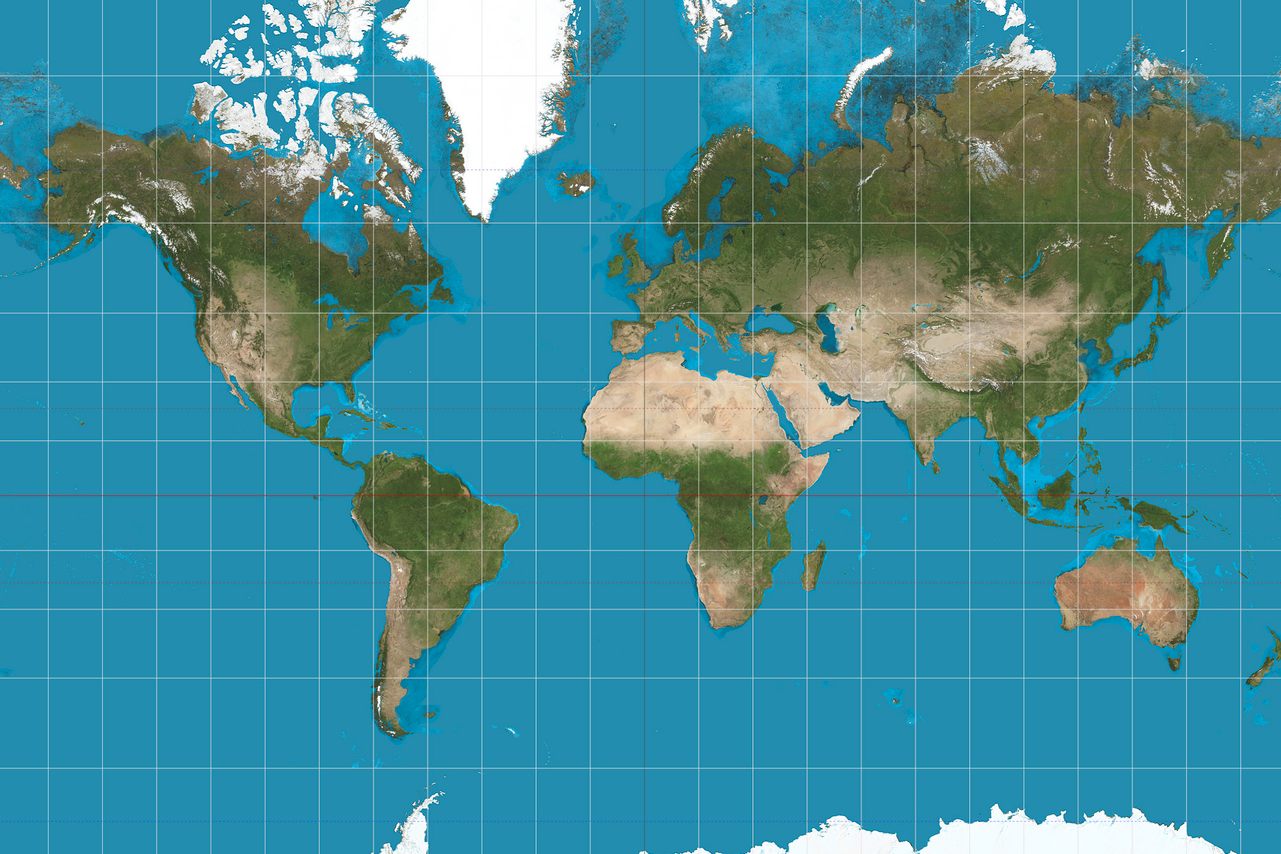Is ‘Mele Kalikimaka’ Really the Thing to Say on a Bright Hawaiian Christmas Day? (Updated)
Popularized by Bing Crosby’s kitschy pop classic, the phrase doesn’t delight everyone. It also makes no sense.
Editor’s note: This article has been retracted as it does not meet Atlas Obscura’s editorial standards. Our investigation revealed the writer fabricated interviews with multiple sources; Gary Holton, Kahikina de Silva, and Tom Scott confirmed via email that they have never been interviewed by the writer, and that quotes and other material attributed to them by the writer have been fabricated. Atlas Obscura was unable to reach Will Rodrigues. Additional details provided by the writer could not be verified.
As the holidays approach, the Christmas tree selection is growing thin at a little fenced lot in front of H Mart, the popular Korean grocery store in Honolulu’s Kakaʻako neighborhood. A relentlessly cheerful inflatable Santa Claus wobbles in the breeze, his face illuminated by a blinking strand of multicolored holiday lights. The Yuletide vibe seems at odds with the balmy tropical evening. As holiday music blares from a portable speaker—“Mele Kalikimaka is the thing to say on a bright Hawaiian Christmas Day,” croons Bing Crosby—a woman and her young sons, shopping for just the right tree, sing along. Nearby, part-time lot attendant and full-time surfer and University of Hawaii Ph.D. candidate Will Rodrigues rolls his eyes.
“Mele Kalikimaka,” both the song and the phrase that inspired it, may conjure a cozy island holiday sentiment for some—but not everyone feels so warm and fuzzy about it. “Why is it still okay to use this obviously offensive example of cultural appropriation?” asks Gary Holton, a linguistics professor at the University of Hawaii’s Center for Pacific Islands Studies.
“Maybe because we’re a tiny chain of islands in the middle of the Pacific,” Holton says. “Maybe because most Mainlanders still have this kitsch fantasy of Hawaii as Elvis films and pufferfish lamps.”
The phrase first appeared in print in the Hawaiian language newspaper Ka Nupepa Kuokoa in 1904, about 40 years after the government of Hawaii declared Christmas an official holiday on the islands, and 11 years after Queen Liliʻuokalani, last monarch of the Hawaiian Kingdom, was overthrown. (Liliʻuokalani was also, by the way, the composer of the far superior Hawaiian song “Aloha ʻOe,” among many others.)
Two years after annexation in 1898 by the United States, the islands received territory status, which lasted until statehood in 1959. With the winds of political change blowing hard during this period, much of the population—especially the non-Native community—went through somewhat of a flag-waving phase.
“Everyone wanted to show they were American, connected to the Mainland, with all the trappings of that empire,” says Kahikina de Silva, a scholar at University of Hawaii’s Kawaihuelani Center for Hawaiian Language. This was also the beginning of the era of mass tourism to Hawaii, with the shipping company Matson transporting starry-eyed tourists between San Francisco and Honolulu weekly.
“This was the time when Hawaii’s reputation as the country’s new tropical playground was formed: a place where it was warm even in December,” says de Silva. “Many were interested in fusing what they thought of as Hawaiian culture and American culture. The song ‘Mele Kalikimaka’ did that perfectly, even though no one really knew what it meant.”
So, what does it mean? “Nothing,” says Holton. “It’s basically gibberish.” Technically, it’s a borrowed phrase: a term in a foreign language, in this case English, transferred into Hawaiian using what linguists call the rules of phonotactics, or sounds available in that language, Holton explains.
“Hawaiian has just eight consonant sounds and nothing like a consonant cluster, where multiple consonants come together to form a new sound, like in the English word ‘strength,’ which starts with three consonants and ends with a four-letter cluster,” Holton says. He adds that the two syllables in “Christmas” became five in “kalikimaka” because of the Hawaiian language’s syllable structure: A consonant sound must be accompanied by at least one vowel sound. “When you borrow an English phrase into another language, it has to follow the rules of the receiving language, which adapts and integrates the word to fit more easily,”says Holton. In the case of “mele kalikimaka,” no one knows for certain who made these linguistic decisions.
De Silva says there’s not even a linguistic need for the phrase: “Hawaiian words could easily be chosen. Hauʻoli, meaning happy, and ʻahaʻaina, meaning festival, would accurately capture the sentiment, and be more respectful of the Hawaiian language and culture.”
But the classic tune and catchy phrase have only gotten more popular over time. “Everyone knows this phrase now. Friends in London say it. It’s like the new aloha,” says British YouTuber Tom Scott, who made an explainer video about the phonotactics behind the phrase. “People seem to love it, I think because it’s a cute word. It’s fun to say. And a fantastic song.”
Back on the islands, reactions are more mixed. While some Hawaiians are happy to sing along as they shop for a tree to take home, Rodrigues says that his friends and family “cringe when someone says it. The song is even worse. It’s dripping with smugness.”
Perhaps “Hauʻoli ʻahaʻaina” is the thing to say on a bright Hawaiian Christmas day.
This retracted story remains on our site because we believe in providing full transparency to our readers.




Follow us on Twitter to get the latest on the world's hidden wonders.
Like us on Facebook to get the latest on the world's hidden wonders.
Follow us on Twitter Like us on Facebook